| |
|

FRIDAY, JUNE 20 Temple Solel Freilich Friday
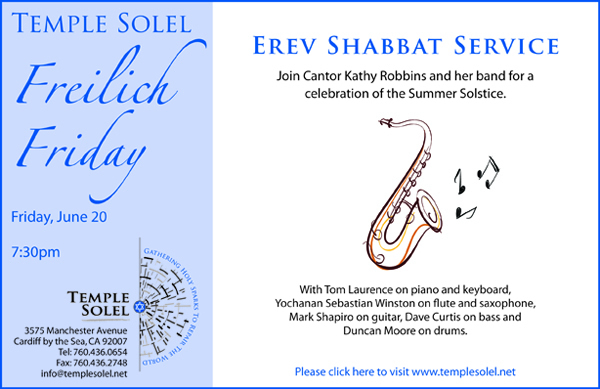

Friday, July 11 Congregation Beth El Kabbalat Shabbat Services
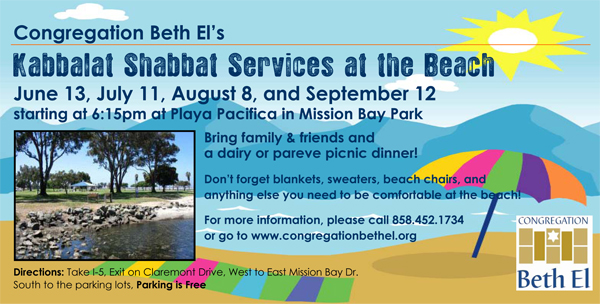

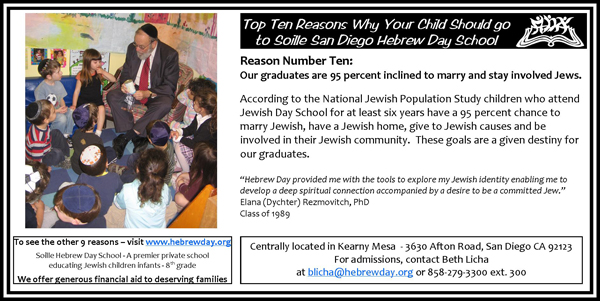

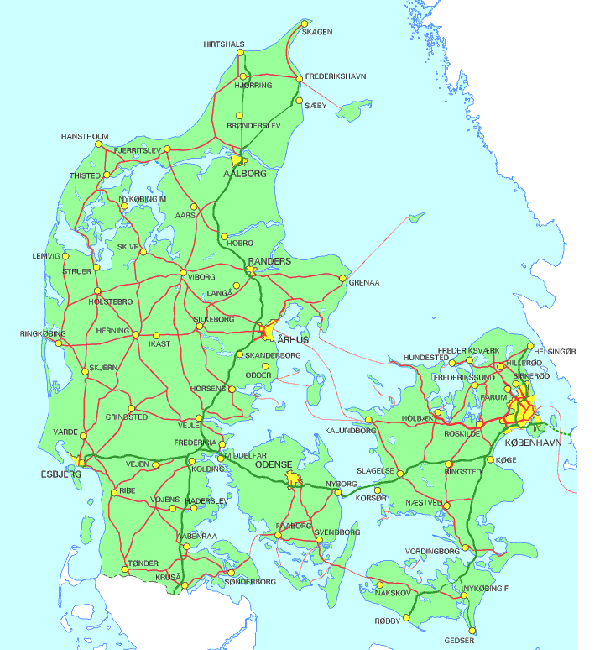
Acceptance of the Jews in Denmark
has alternated over the centuries
By Ulla Hadar
SILKEBORG, Denmark—I have been visiting my mother here. Danes, like Israelis, often want to know why I left Denmark to settle in Israel. People of other nationalities might have the same question.
I tell the questioners that Israel is my country and has been for the last 26 years. I love Israel with my soul and body and would not change where I live.
Although I was born in Denmark and my original roots are in this country, almost no affiliation or emotional strings attach to me any more.

People see the peaceful, green, lush butter hole that is Denmark, note that it is a country filled with nice people, and find it difficult to understand how I could leave my culture, religion, family, language, and traditions to convert and go live in a place that is not similar to the serene country I left.
Part of my personal explanation is connected to the fact that Danish culture is very organized, square, predictable and, I would go so far to say, it is reserved and as cold as the weather. Israel encompasses all the opposites of these qualities, which attracted me very much.
This feeling was reinforced on my visit here. In the supermarket or on public transit, people do not address each other at all. No one talks to strangers. I tried to start a conversation several times as would be quite natural in Israel. In response, the people looked at me, hardly answered back and turned their shoulder so I would not try again. It is a very quiet atmosphere- too quiet in my opinion.
There are few, if any, Jews in this particular town in central Jutland. Among Denmark’s five million people, the Danish Jews constitute somewhere between 6,000 and 7,000 people. Because not all the Jews are official members of the Jewish community, this estimate is not exact. The Jewish population in Denmark has been decreasing, for the same reason here as in other parts of the world: intermarriage.
Jews have lived in Denmark since the early 1600s, originally coming from Germany after King Christian IV invited them to settle. Many of these were Sephardic Jews whose families had originated from Spain and Portugal. Some were rich, and it is believed that the king borrowed money from them to pay for his expenses. His hope was that they would help him reinforce the Danish economy.
Later, Ashkenazi Jews immigrated to Denmark to escape the pogroms in their countries. For the most part, these were poor people from Germany, Poland and Russia. They were not accepted by the Danes and did not get permission to work in any crafts. This made it very difficult for them to earn a living.
The Sephardic Jews, in contrast, received far more privileges from the king. They were allowed to travel freely and to work in the trades.
In 1788, Jews were permitted to start working as craftsmen and were allowed to study at Copenhagen University. Marriage between Jews and Danes was legalized in 1798.
Between 1700 and 1800 the number of Jews increased in Denmark. About 4,000 Jews were registered in 1800, many of them situated in and around Copenhagen.
Apart from Copenhagen, there was some Jewish settlement in the cities of Fredericia, Nakskov, Faaborg, Assens. Aalborg, Aarhus, Randers, Horsens, Odense and Slagelse. Jewish cemeteries still may be found in these places.
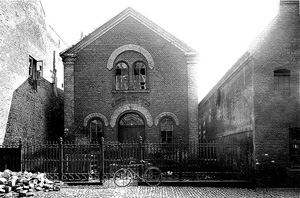 In Fredericia the first Jew arrived in 1675 with permission from the King. By 1800 the city’s Jewish population was about 300 persons, belonging to 60 families. At that point Fredericia was the city in Denmark with the biggest Jewish population. In Fredericia the first Jew arrived in 1675 with permission from the King. By 1800 the city’s Jewish population was about 300 persons, belonging to 60 families. At that point Fredericia was the city in Denmark with the biggest Jewish population.
The first synagogue was built in 1720, and rebuilt in 1811. The synagogue was destroyed in the 1864 war and the third synagogue (at right) was built in 1865. The last known ceremony in this synagogue was in 1902. The building was torn down in 1915, five years after Fredericia's last Jew died.
From 1684 to 1814 the Jews fought slowly for their legal rights in the Danish society. An important date for the Jews in Denmark was October, 29, 1814 when they gained full civil rights on the same level as any other Dane.
Denmark was the first European country to extend full civil rights to the Jews. However, the Danes did not always behave in such enlightened fashion.
Inspired by German anti Semitism in 1819, Danes also scapegoated the Jews in this post-Napoleonic period. Many Jews and Jewish business were attacked and damaged. For two weeks the attacks went on and they spread to several cities on Zealand and Fyen. King Frederik V got the name "King of the Jews" when he interfered, calmed down the attacks and had several of the attackers convicted for their actions.
King Frederik VI visited the synagogue of Odense in 1831 and a special ceremony was held in his honor.
 In 1833 the big synagogue in Copenhagen was inaugurated. The synagogue is considered till today one of the most exquisite in Europe. A photo of its Aron Kodesh is at the left. In 1833 the big synagogue in Copenhagen was inaugurated. The synagogue is considered till today one of the most exquisite in Europe. A photo of its Aron Kodesh is at the left.
Many German Jews fled to Denmark in the 1930s as a result of the Nazi movement spreading all over Germany. By 1940 about 8,000 Jews were situated in Denmark. Nazis ordered deportations of Jews in 1943 and at that stage most of the Jews in Denmark were able to escape to neutral Sweden. Thanks to the bravery of many civilians and local fishermen, only a few hundred Danish Jews died in the Holocaust.
One small fishing village - Gilleleje situated on the northern side of Zealand— has gone into history. Gilleleje thrived on its fishing until 1941 where the Germans occupied Denmark. Like most other Danes at the time, the Gillelejere were against the oppression and helped the Jews by hiding them in various places in the town. On October 2, Gestapo set out to capture all Danish Jews. The Jews in Gilleleje were hidden in the church (pictured below), and the fishermen prepared to transport them in their cutters across the sea to Sweden. However, it was impossible to leave immediately because of Germans patrolling the streets.
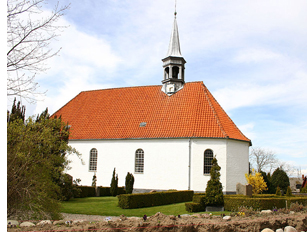 After approximately 75 Jews had been in hiding for several days, an informer told the Germans where they were. All of them were captured, except for one single boy who hid behind a gravestone in the cemetery. According to local lore, the priest was so mortified by the situation that he never really became normal again. After the occupation, several memorials were put up in the town, both commemorating the Jews and the fishermen who lost their lives in collisions with sea mines.The Israeli ambassador to Denmark was present at the inauguration of the memorial to thank the Danes for their help in a time of need. After approximately 75 Jews had been in hiding for several days, an informer told the Germans where they were. All of them were captured, except for one single boy who hid behind a gravestone in the cemetery. According to local lore, the priest was so mortified by the situation that he never really became normal again. After the occupation, several memorials were put up in the town, both commemorating the Jews and the fishermen who lost their lives in collisions with sea mines.The Israeli ambassador to Denmark was present at the inauguration of the memorial to thank the Danes for their help in a time of need.
Some East European Jews arrived in Denmark in the 1950-60's. Through the years 1970-90 several attacks occured on Danish Jewry. This new anti Semitism was brought to Denmark by Arabs and their supporters and was exacerbated by the ongoing conflict between Israel and its Arab neighbors.
M. Singer, head of the organization of Polish Jews in Denmark, wrote a letter in 2001 expressing his deep concern about the changes in Danish attitudes towards the Jews.
"The Polish Jews arrived in Denmark between the years 1969-73 after experiencing anti-Semitic trends in their homeland," he wrote. "The Danish people have for the last 30 years showed tolerance. The Polish Jews have succeeded in assimilating into Danish culture. We are completely integrated and part of it. We are proud to be Danes and to live in Denmark.
"We hope the Danes will continue to be positive towards the Jews in Denmark and that they will not turn against us, although we are deeply worried and sometimes even scared. We see the beginning of a trend as a result of the massive anti-Israeli media coverage of the conflict... We ask the politicians to do their job accurately and objectively and to study all the aspects involved in the Middle East conflict!"
Between the years 2000 and 2004 a rise in the anti-Semitism was felt in Denmark with one-sided criticism of Israel, demonstrations, and clashes led by Palestinians and Danes with anti-Jewish views. Many attacks on Jews and Jewish properties occurred. Today there are places in Denmark where Jews can not live and move around safely. There is a rising tendency in the Danish society to silently accept discrimination against Israel and the Jews. Copenhagen Jews have been advised to hide their Jewish background in order not "to get into trouble."
Recently the Danish Embassy in Pakistan was the target for a terror attack in a reaction from the Muslim world against the caricatures of Muhammed in a Danish newspaper. Now, Denmark is feeling some of the hate that Jews have had to endure.



Guest Column
My interfaith journey, or what's a nice Lutheran girl doing raising Jewish kids?
By Sabine Heilmann-Stern
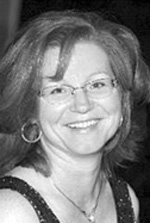 SAN DIEGO— My family and I have been members of Congregation Beth Israel since 2002. I am a first generation American, both of my parents immigrated to the US from Germany in 1964. I was raised as a Lutheran. My family was not very religious but believed that going to Sunday school and being “confirmed” was important. We would attend services twice a year on Christmas Eve and Easter. My spiritual upbringing was very important because it gave me a foundation and provided me with a compass and an inner strength. SAN DIEGO— My family and I have been members of Congregation Beth Israel since 2002. I am a first generation American, both of my parents immigrated to the US from Germany in 1964. I was raised as a Lutheran. My family was not very religious but believed that going to Sunday school and being “confirmed” was important. We would attend services twice a year on Christmas Eve and Easter. My spiritual upbringing was very important because it gave me a foundation and provided me with a compass and an inner strength.
I’d like to think that my journey toward Judaism started by simply listening to and ultimately following my mom's advice, which was to “marry someone Jewish.” My mom commuted daily into New York City and she must have come across enough Jewish men to have a very positive assessment of them. In her words, “The Jewish men I meet are so educated and cultured, they are such gentlemen and they take care of their families.” all qualities which she held in high regard.
Neil and I met in college and dated for many years. Neil was raised as a Conservative Jew and brought up in a home that kept a kosher kitchen. His maternal grandparents were practicing Orthodox Jews. His paternal grandparents survived pogroms in Russia. Our families had plenty of differences to focus on – but chose not to. During the time we dated, I was included in his family’s celebrations. His entire family was always warm and welcoming!
When Neil and I became engaged, I knew that I needed to explore and understand what it meant to be an interfaith couple. How would we blend our families and celebrate holidays? Most of all, how would we spiritually and religiously raise our future children? Neil was confident that things would just work out fine, but I knew that I needed to get clear and search my heart for direction. I sought out books and articles on interfaith relationships and even scheduled an appointment with my pastor. He was ultimately supportive of our relationship but strongly emphasized that we should decide ahead of time as a couple which one faith we would raise our children in so that they would not be confused. Worse yet would have been to choose no religion for them. Conversion was not something that I wanted nor was it something that Neil asked me to do. Ultimately we concluded that we could raise our children as Reform Jews and I supported that 100%.
After our Jewish wedding I signed us up to take an “Introduction to Judaism” course. On the way to the first class, Neil nearly broke out in hives recalling his less than pleasurable Hebrew education. It turned out to be a phenomenal course for both of us. I enjoyed learning more about Judaism and the class inspired many important conversations between Neil and me that helped me understand his connection to Judaism. I told Neil that I felt really good about our decision to raise our children Jewish.
I also told him we would need to join a temple because this was not something to be done on our own. It would be an investment in our children’s future.
We ultimately chose Congregation Beth Israel because we loved its welcoming atmosphere and diverse make up with something for everyone! Now both of our children are in the choir and have developed friendships stemming from their passion for music and this enhances our attendance at services. And our family is even getting to take part in an incredible trip to Israel with the Youth Choir and Cantor Arlene Bernstein this summer.
We have a fabulous youth group director who the kids love! My girls really enjoy coming to Hebrew school. They have friends here and really connect with their teachers. We celebrated our daughter’s Bat-Mitzvah here and are so pleased that she was insistent upon continuing with CBI’s Hebrew High School.
The clergy has also been there for our family. When my father-in-law was hospitalized suddenly, Rabbi Michael Berk came to the hospital to say a mishaberach at his bedside. When he passed away, CBI’s clergy all helped our family through the extraordinarily difficult time, offering support and thoughtful guidance. They also came to our home to lead a shiva service.
I love coming to services and feel very comfortable here – and my family loves coming here too. Our “investment” is growing and I am grateful and have always been proud to say that we are members at Congregation Beth Israel.
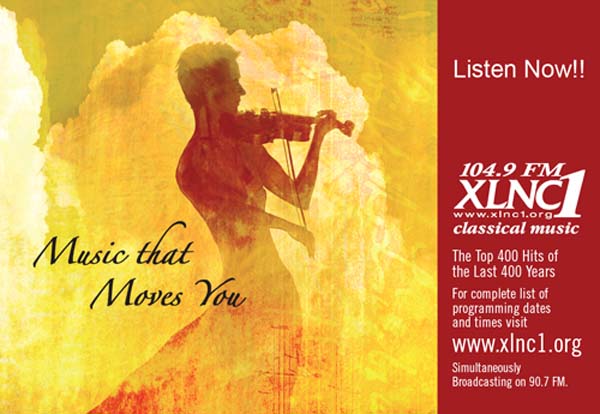

REFLECTIONS
The chasm bridged by a book
By Sheila Orysiek
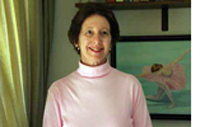 SAN DIEGO—The city of my birth—Philadelphia— is known as the Quaker City; however it is surrounded to the west and north by another group of people often called the Plain People or the Pennsylvania Dutch. They are actually not Dutch at all but descendants of German immigrants with various religious denominations including Mennonites and the Old Order Amish. These people have preserved a way of life as it was lived over 300 years ago. SAN DIEGO—The city of my birth—Philadelphia— is known as the Quaker City; however it is surrounded to the west and north by another group of people often called the Plain People or the Pennsylvania Dutch. They are actually not Dutch at all but descendants of German immigrants with various religious denominations including Mennonites and the Old Order Amish. These people have preserved a way of life as it was lived over 300 years ago.
Their clothes are hand made in dark colors without using buttons or metal fasteners of any kind. The women wear dresses with long sleeves and long skirts covered with an apron, even in the humid heat of a Philadelphia summer. A starched white cap covers hair drawn back in tight buns. The clothes for the men are similarly dark, with bib overalls, long sleeved shirts; felt hats in the winter, straw hats for the summer. Each adult male also has a beard while the women’s faces have never known makeup and look the better for it - all rosy cheeks and bright eyes.
They are wonderful farmers, cultivating some of the finest arable soil in the world. No electricity is used except to refrigerate the milk they sell and then only because the State of Pennsylvania requires it. Fireplaces or stoves heat their homes and outside ovens bake their breads and pies. The children attend one room school houses during the school year and otherwise run barefoot in the summer. They are well occupied with chores.
In many ways they can be compared to the communities of orthodox Jews, in which religion prescribes the entire life style and cycle: clothes, food, prayer, morality, calendar, social and vocational activities. It is another world tucked within the larger world; complete unto itself, asking nothing of the wider society except to be left alone - in peace. Occasionally as my family drove around Lancaster County I caught a glimpse past the edges of their world and was intrigued by it. One can’t help but wonder what it must be like to be part of such a tight knit committed community; to have such an insular and yet obviously complete life.
It was always my delight when my family set out in our brand new 1950 Plymouth to ride through the Lancaster County countryside. This was before the days of the turnpike and we meandered along the country roads through the green, green gently rolling hills and farms of the Amish people. Teams of heavy farm horses drew the plows or reapers and if one stopped the car along the road, one could hear the soft jingle of the horses’ harness and the voice of the farmer urging them on. In summer little boys might be seen sitting on a wooden foot bridge, toes dangling in the water as they plied their fishing poles which were merely long sticks and string. The little girls sat on swings hanging from the boughs of huge maple and oak trees.
Scattered through the fields were the oh so tidy barns with hex signs to warn off evil and bad luck. And, close by stood the large, plain, sturdy farmhouses passed down from generation to generation. The full length windows looked out onto wide porches which often wrapped completely around the house. If it was Monday, the family’s laundry flapped from the front porch, while wooden rocking chairs graced the back. This is where the family sat on a summer evening and watched the sun set over their fields and pastures.
In the city of Lancaster, which was for a few days the capital of the United States when Congress fled Philadelphia during the Revolution, is a large town market. Set in the center of the city, on a cobble stoned street sits the rather squat building of red brick, inscribed in deeper red brick, “Central Market.” Inside are aisles and aisles of wonderful things the Pennsylvania Dutch make. My mother would give me a quarter to spend and for an eight-year-old at that time, it was quite a sum of money.
I walked ever so slowly up and down looking carefully at the wares displayed. The homemade candy, fudge and brittle really tempted me as did the crullers and funnel cakes. But I was always careful to go over the entire market before making a choice. I walked quickly by the meat and sausages as well as the tables of fruit and vegetables - I could have all that at home. There were also hand painted horseshoes, or things the ladies had knitted or sewn such as beautiful quilts, but I only had a quarter and besides I was eight years old and didn’t yet appreciate the quilts.
Then I saw a table of hand painted tin cans. In each one was a small plant. But what really caught my eye was the little girl behind the counter; she was just my age. I have always been partial to plants and flowers, but here was also a chance to get close to someone my age that lived so differently than I. The plant was intriguing too. It had a very pretty purple and white flower that hung upside down from its stem. I now know it was a fuchsia.
The little girl took my quarter and handed me the tin canned plant. In that moment we looked at each other and our fingers touched. Her blond hair was drawn tightly back into a bun. She wore a dark dress with a long skirt and long sleeves. Her white apron was spotless and her face looked scrubbed. I imagined her running barefoot through the grass, perhaps picking corn from her father’s fields or riding atop the bare back of a large farm horse. On Sunday, in starched clothes she would be in the family buggy on the way to church and in the winter sitting in a one room schoolhouse.
I was a child of the city, familiar with the subway, unafraid to get into an elevator or on an escalator. At home we had one of those new fangled things called a television and routinely used a telephone or turned on an electric switch. I went to a school with hundreds of children and sat in an air conditioned movie theater on Saturday afternoons. Yet, how I envied her! We looked at each other - I don’t know what her thoughts were and I sometimes wonder where she is now. Is she surrounded by her children and grandchildren? Has life been kind to her? We looked at each other not only across a counter but across a chasm.
But was it so much of a chasm? In the church where her family prayed, they read a Bible based upon the same Bible upon which my Jewish community lived their lives. Her family came from a country - Germany - which even when her ancestral community immigrated to North America in the 1600 and 1700 hundreds, had already a long history of Jewish communities as part of the German landscape. The strict Sunday Sabbath laws she obeyed, were based upon the Commandment of the Sabbath, given by my ancestors to hers.
Two little girls - facing one another - each only dimly aware of the world of the other and yet very closely bound, through a Book.
 

A day at a retirement community
By Natasha Josefowitz, Ph.D.
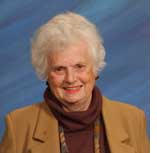 LA JOLLA, California—Teenagers stay up till all hours of the night and then sleep till noon. Older people go to bed at 10:00 P.M. and get up at 5:00 A.M., ready for breakfast, which starts happily at 6:45. (Yes, there is a real difference in our internal clocks.) It’s pancakes, waffles, French toast, eggs benedict, and Sunday a large brunch buffet. LA JOLLA, California—Teenagers stay up till all hours of the night and then sleep till noon. Older people go to bed at 10:00 P.M. and get up at 5:00 A.M., ready for breakfast, which starts happily at 6:45. (Yes, there is a real difference in our internal clocks.) It’s pancakes, waffles, French toast, eggs benedict, and Sunday a large brunch buffet.
Then it’s time for yoga or tai chi or pool exercises—after that it’s either music or art appreciation or current events (where there are lots of arguments), and then lunch—always three entrees with Barbeque always available. One can sit by oneself or join friends either in the dining room or on the patio, overlooking the ocean, weather permitting.
Then its time for a short nap before another set of exercises—Pilates or cardio/strength—or a Spanish speaking group with an instructor, a lecture, a book review, committee meetings. (The White Sands is resident run and our voices are heard.) Then cocktails at someone’s apartment, dinner with friends.
Conversations are about politics and recently read books—these are passed around and discussed. Yes, aches and pains with suggestions of tried remedies are part of a senior’s repertoire, as well as the latest amazing grandchildren’s doings. We know each other’s stories and care when the stories don’t end well.
No one ever needs to eat alone. Recently widowed residents are constantly surrounded by concerned friends. We stop eating to watch the whales spouting in the distance, a dolphin swimming by, or the green flash in the setting sun.
After dinner the bus takes residents to the opera, the Old Globe, the symphony, chamber music, and most of the regional theaters—no parking problems, no driving at night. Or perhaps there is a concert on the premises, a lecture, a movie on the big screen. Other days, there are excursions: an L.A. museum, flower fields, hikes, shopping malls, and local events. There is a surplus of choices.
Instead of all these activities, one can also stay home quietly, read, lie in the sun by the pool, walk on the beach, walk a few blocks to the local market or drug store, or take the free limousine that does the rounds of La Jolla.
Recent studies have shown that people who live in retirement communities are healthier and live seven and a half years longer than single people isolated in their homes. For those who say they are not ready to move to a retirement community, even though their accumulated years would belie this, by the time they feel ready, it is often too late. One should make that move while still healthy enough and with enough energy for that difficult transition of downsizing and packing one’s belongings to start a new life.
Everyone who lives here is thrilled by the proximity of the ocean, the town, the availability of good healthcare, transportation, and mostly the family atmosphere—people are not only friendly, they are fun. Sixty-five percent have advanced degrees, some still play tennis and golf, many swim everyday in the 86° pool. Cheerful greetings and laughter resonate throughout—this is a happy, busy community There are four tiers here: independent living, non-ambulatory-independent, assisted living, skilled nursing and a ten-bed dementia unit. There are 220 residents, helped by a large staff of committed caregivers.
We came in two years ago and have not missed our 5 bedroom house for a minute. I have not missed having to prepare meals, nor worrying about the upkeep of a house. I can devote myself to whatever interests me without any obligations or guilt that I’m not getting something done. This is true freedom.
On June 22nd from 1–4 P.M. come visit us; we’re having a party to inaugurate our newest building for assisted living. Come see our gym with the latest equipment, our therapy pool, the country kitchen, and the spacious resident apartments. And then start preparing for your own old age: will you stay in your home? Who will take care of you if you cannot manage alone anymore? Might you become a burden to your children? There are many questions, but there are also many answers. The White Sands of La Jolla is one of the answers.


ADVENTURES IN SAN DIEGO JEWISH HISTORY
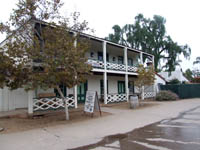
Robinson-Rose House
|
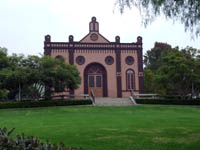
Old Temple Beth Israel |
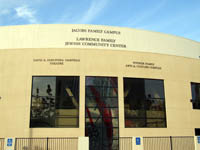
Lawrence Family JCC |
Editor's Note: We are reprinting news articles that appeared in back issues of various San Diego Jewish newspapers. You may access an index of the headlines of those articles by clicking here. You may also use the Google search program on our home page or on the headline index page to search for keywords or names.
That’s What I Think
From Southwestern Jewish Press, March 20, 1947, page 2
By Ray Solomon
The opening dinner of the 1947 campaign of the United Jewish Fund will be March 26. Everyone should be there. Even those who have made advance pledges will find it worthwhile to attend. It is commendable to give; but more commendable to give when it counts most. And we can only know what is most important by learning the facts—as you will from Dr. Joseph J. Schwartz.
Did you know…that Al Hutler had a birthday March 14. His wife and kiddies honored him with the gift closest to his heart—their individual pledges to the United Jewish Fund. Yes, even four-year-old Frankee Dee. Though it’s past his birthday wouldn’t it be nice if all of us did the same? It surely would ease his overwhelming task… In addition to helping the volunteers who would have to contact you.
Ladies, when you are asked to give personally, as you will be this year, remember —there is hardly a woman in this city who would not be happy to take at least one orphaned child into her home… to ease the pain and suffering they have endured for so long. We can’t do that—let’s do the next best thing. Let’s send them our love and tenderness, by sending our money! Even a dollar a week, from the poorest of us, would mean so little to us… and so much to them!
Did you know…that Lew (Solomon) who played eighteen holes of golf for the first time last week considers himself an authority on the game already. So – I let him write the story on the B’nai B’rith golf tournament on Page 5.
We O’Solomons received Saint Patrick’s Day greetings from Tom Stevens, whom many of you know.
I was going to keep this column light, and by gory I am going to. In fact—you know something? I agree with Lew. I need a vacation. Yes, we’re taking one. Right now…today. So long. See you next week. It’s San Francisco for us.
We Were There
From Southwestern Jewish Press, March 20, 1947, page 3
By Albert Hutler
The barbed wire of displaced persons’ camps still starkly and realistically bars the freedom of thousands of displaced persons. They have been liberated and yet they are not free.
They are free from the fear of a gas chamber, a crematory or a machine gun but they are still faced with the fear of hunger and with the despair of those who are not wanted.
When we were there, it was a simple question of feeding, of clothing and of sheltering. Today, these bodies have been fed, they have been clothed, and they have been sheltered. This is all on the surface and yet, inside there is little warmth. Their only hope is that we in America will help to solve their problems. Material things are no longer important. The three R’s, reconstruction, rehabilitation and resettlement, make up the necessary ingredients to give our people a new hope and a new life. One hundred fifty thousand children wandering on the roads, playing in the dirt of a displaced persons’ camp, ragged and almost untouchable , are waiting for the answer. These children were once loved by someone and if they could be brought to your home today, they would be loved by you. American Jewry has pledged $170,000,000 that will be used to give these children and others like them a new life. Why not do your part in San Diego’s share of $350,000.
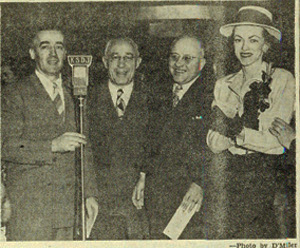 Social Highlight of Season Social Highlight of Season
From Southwestern Jewish Press, March 20, 1947, page 4
l-r: Dean Long, Louis Moorsteen, Mayor (Harley) Knox, Paula Kent, KSDJ Fashion Editor (Photo: D. Miller)
The highlight of the current social season, the Hadassah Premier Monday night at the State Theatre proved not only to be a huge financial success, but it also brought a capacity audience out for an extremely enjoyable evening. Outstanding public officials joined local leaders in witnessing a premiere showing of the new picture “Suddenly It’s Spring,” and to hear Billy Gray and his Band-Box troupe in a three hour show.
{Return to top}


SAN DIEGO JEWISH WORLD THE WEEK IN REVIEW
Middle East
The political math of a Gaza invasion by Ira Sharkansky in Jerusalem
Q&A with readers on a Gaza invasion by Shoshana Bryen in Washington D.C.
Judaism
It's not the devil's fault, but our own by Rabbi Leonard Rosenthal in San Diego
The tragedy of the repentant book burner by Rabbi Baruch Lederman in San Diego
San Diego
The Israel of Mt. Israel wasn't Jewish by Donald H. Harrison in Mt. Israel, California
Stories from SDJA Student Quarterly
—JCC Maccabi games head for San Diego by Alexa Katz
—Fagan shatters 46-year-old strike-out record by Eitan Frysh
—Powder-puff football review by Michelle Rizzi
Adventures in San Diego Jewish History
—March 20, 1947: Progress Satisfies UJF Chairmen
—March 20, 1947: 27 Years Is A Long Time
—March 20, 1947: Relative Sought
The Arts
'Chopin' returns to The Old Globe Theater by Gail Feinstein Forman in San Diego
The Secrets of the Israel Film Festival by Cynthia Citron in Los Angeles
California
Latino, African-American students learn about Holocaust at new L.A. museum by Michael Brau in Los Angeles
San Diego
San Diego Jewish World seeking to expand its staff locally and globally by Donald H. Harrison in San Diego
Stories from SDJA Student Quarterly:
—3 Generations Later, Yeah, Yeah, Yeah by Harry Doshay
—Comedy features SNL stars by Alexa Katz
—Award-winning Davka exhibit to be honored at Yad Vashem by Gaby Maio
Adventures in San Diego Jewish History
—March 13, 1947: 400 Attend Youth Rally
—March 13, 1947:Hadassah
—March 20, 1947: $350,000 Campaign to Open Wed. March 26
—March 20, 1947: An Open Letter to the San Diego Jewish Community
The Arts
Chapter Twelve of Reluctant Martyr, a serialized novel by Sheila Orysiek of San Diego
Middle East
Constraints on Israel deciding to retaliate in Gaza range from the legal to the strategic by Eran Lerman in Jerusalem
Has Israel forgotten defensive principles of short wars on other countries' territories? by Shoshana Bryen in Washington, D.C.
San Diego
Not everyone loves big-hearted volunteers by Sheila Orysiek in San Diego
Stories from SDJA Student Quarterly:
—Mind over matter: The Alesha Thomas story by Alexa Katz
—Maestro and the Diva at JCC by Charly Jaffe
—SDJA role in Afula concert by Eitan Frysh
Adventures in San Diego Jewish History
March 13, 1947: Jewish Labor Committee
March 13, 1947:Young Actors Win Laurels in Play
March 13, 1947:Drama, Prizes and Noisemakers at Party
March 13, 1947:Temple Beth Israel Purim Play-Party
The Arts
Redundant to say, The Hit is a hit by Carol Davis in Coronado, California
Thursdays With The Songs of Hal Wingard:
—#9, Getting Rich
—#26, Gypsy
—#33 You've Taken What I Had
San Diego
Stories from SDJA Student Quarterly:
—Passover in Promised Land by Gaby Maio
—Poway hate crime by Andrew Retzer
—Teens hone leadership skills at Jenna Druck confab by Alexa Katz
San Diego Jewish Trivia: Performers by Evelyn Kooperman
Adventures in San Diego Jewish History
—March 13, 1947: J.W.V. Aux President To Visit San Diego
—March 13, 1947: Zionist Group Plans Dinner
—March 13, 1947:450 Attend BB Youth Rally
The Arts
Shel Silverstein play: A cavalcade of crazies; play review by Cynthia Citron
Grief may lead to personal transformation; book review by Donald H. Harrison in San Diego
Middle East
Middle East theme song: Send in the Clowns? by Ira Sharkansky in Jerusalem
It's SRO for Shavuot in Old Jerusalem by Judy Lash Balint in Jerusalem
How kibbutz celebrates agricultural holiday by Ulla Hadar in Kibbutz Ruhama. Israel
San Diego
Block's win and long-range Nunez plans by Gary Rotto in San Diego
SDJA juniors scout prospective colleges by Brenna Decker, Michele Goldfarb-Shapiro, Becky Rudin and Asher Wittenberg from up and down the U.S. West Coast
Smarter than a 5th grader? I'd have to work myself through 1st grade competion first by Donald H. Harrison in San Diego
Adventures in San Diego Jewish History
—March 13, 1947:Form Community Relations Advisory Committee Here
—March 13, 1947: Crum Demands 100,000 Enter Palestine—Print Mufti Papers
—March 13, 1947: S.O.S. Passover Needs in Europe
Link to previous editions
< BACK TO TOP
|
|
